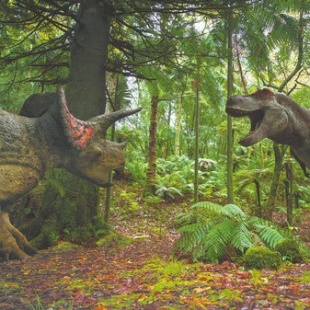Back with dinosaurs
New series incorporates scientific findings of past two decades to give BBC's iconic TV show a fresh look, Xu Fan reports.

"Take Triceratops as an example," the Chinese paleontologist says. "When its fossils were first discovered, some scientists actually thought it was a giant bison.
"Dinosaurs are inherently fascinating. You see children as young as 2 or 3 years old falling in love with them — they ignite imagination, stimulate young minds, and satisfy that endless childhood curiosity," he adds.
"But on a deeper level, studying dinosaurs isn't just about the past. It's part of humanity's eternal quest: Where did life begin? Where is it going? These creatures humble us. They make you realize life's grandeur — and how brief our own chapter in Earth's story truly is," Xing adds.
Xing says that the new Walking with Dinosaurs program incorporates the latest scientific discoveries of the past two decades. It gives audiences a clearer picture of the dinosaurs' colors, sounds, footprints, and even aspects like their diseases — revealing connections to modern birds and helping today's viewers better understand these ancient creatures that ruled the planet long before humans appeared.





































